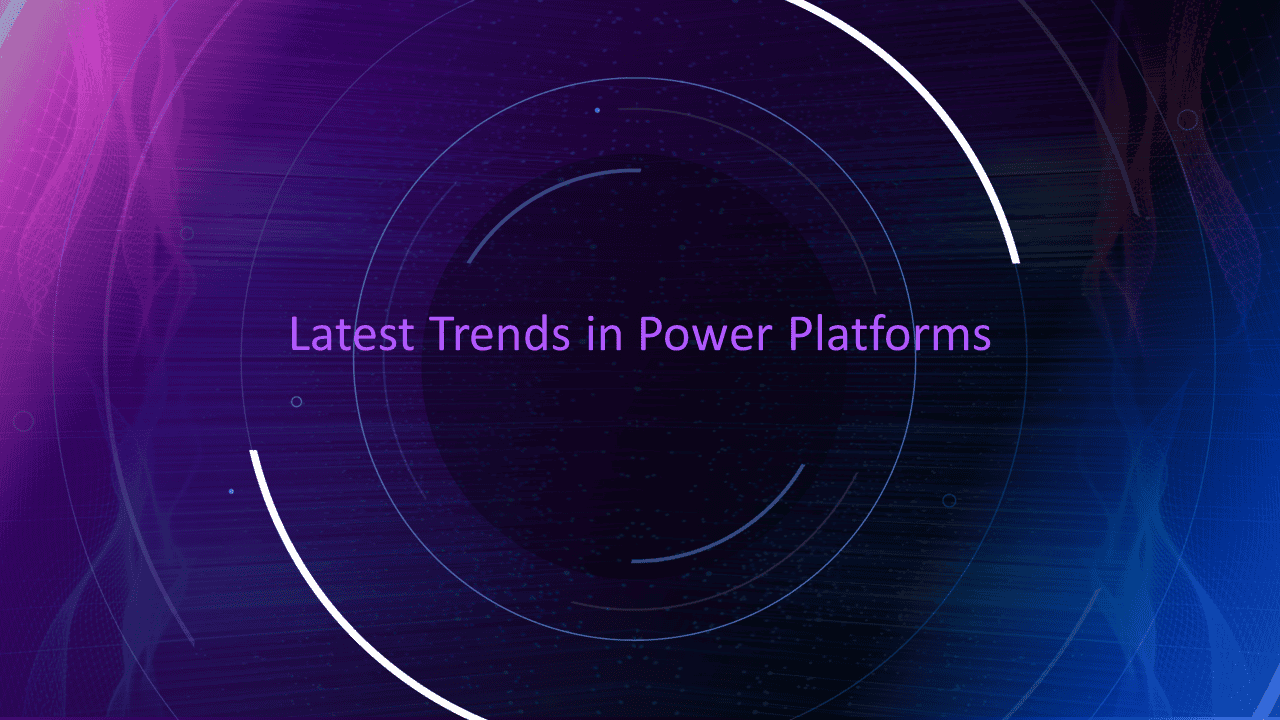Here’s a list of the latest trends in the field of Power Platforms:
Low-code/no-code development:
The rise of low-code and no-code platforms within Power Platforms allows users to build applications and automate processes with minimal coding knowledge, democratizing app development and increasing productivity.
Integration with AI and machine learning:
Power Platforms are increasingly incorporating artificial intelligence (AI) and machine learning (ML) capabilities to enable predictive analytics, natural language processing, and intelligent automation, enhancing decision-making and efficiency.
Expansion of Power Automate:
Power Automate, the workflow automation component of Power Platforms, continues to evolve with new features and integrations, enabling users to automate repetitive tasks, streamline processes, and connect to a wide range of services and applications.
Adoption of Power BI for data visualization and analytics:
Power BI, the business intelligence tool within Power Platforms, is seeing widespread adoption for data visualization, analytics, and reporting. The platform’s intuitive interface, advanced analytics capabilities, and integration with other Microsoft services make it a popular choice for businesses seeking actionable insights from their data.
Dynamics 365 integration:
Power Platforms are tightly integrated with Microsoft Dynamics 365, enabling seamless connectivity between CRM (Customer Relationship Management), ERP (Enterprise Resource Planning), and other business applications. This integration facilitates end-to-end business process management and enables organizations to leverage data-driven insights for better decision-making.
Focus on governance and security:
With the increasing use of Power Platforms across organizations, there is a growing emphasis on governance, compliance, and security. Microsoft is continually enhancing security features, access controls, and compliance certifications to ensure that Power Platform environments meet the highest standards of data protection and regulatory compliance.
Hybrid and multi-cloud deployments:
As organizations embrace hybrid and multi-cloud environments, Power Platforms are evolving to support deployment across on-premises, cloud, and hybrid infrastructures. This flexibility enables organizations to leverage the benefits of Power Platforms while accommodating their unique IT architectures and requirements.
Citizen developer empowerment:
Power Platforms empower citizen developers—non-technical users within organizations—to build, customize, and deploy applications and workflows. This trend is accelerating as organizations recognize the value of empowering business users to solve their own challenges and innovate rapidly without relying solely on IT departments.
Industry-specific solutions:
Microsoft is increasingly focusing on developing industry-specific solutions and templates within Power Platforms to address the unique needs and requirements of various sectors such as healthcare, manufacturing, retail, and financial services. These industry-focused offerings streamline adoption and accelerate time-to-value for organizations in specific verticals.
Community-driven innovation:
The Power Platform community is vibrant and active, with a growing number of users, developers, and partners contributing ideas, best practices, and solutions. Microsoft is leveraging this community-driven innovation to enhance the capabilities and features of Power Platforms, fostering collaboration and knowledge sharing among users worldwide.
FAQs (Frequently Asked Questions)
What are Power Platforms, and how do they benefit businesses?
Answer: Power Platforms are a suite of Microsoft tools and services—including Power BI, Power Apps, and Power Automate—that empower organizations to build custom applications, automate processes, and analyze data. They benefit businesses by enabling faster app development, streamlined workflows, and data-driven decision-making.
What is the difference between Power BI, Power Apps, and Power Automate?
Answer: Power BI is a business intelligence tool for data visualization and analytics, Power Apps is a low-code/no-code platform for building custom applications, and Power Automate is a workflow automation tool. While they serve different purposes, they are all part of the Power Platforms suite and can be integrated to create comprehensive solutions.
How easy is it to learn and use Power Platforms for someone with limited technical skills?
Answer: Power Platforms are designed to be user-friendly, with intuitive interfaces and drag-and-drop functionality. Users with limited technical skills can quickly learn to build apps, automate processes, and analyze data using Power Platforms. Microsoft also provides extensive documentation, tutorials, and community support to assist users at every skill level.
What industries are best suited for adopting Power Platforms?
Answer: Power Platforms are versatile and can be adapted to various industries, including healthcare, manufacturing, retail, finance, and more. Any organization looking to improve efficiency, automate repetitive tasks, and gain insights from data can benefit from adopting Power Platforms.
Are there any security concerns associated with using Power Platforms?
Answer: Microsoft prioritizes security and compliance in Power Platforms, with features such as role-based access controls, data encryption, and compliance certifications (such as ISO and SOC). Organizations can also implement additional security measures, such as multi-factor authentication and data loss prevention policies, to further enhance security.

